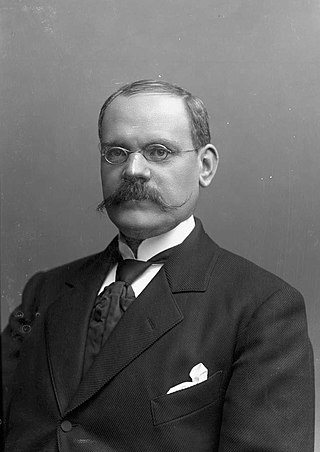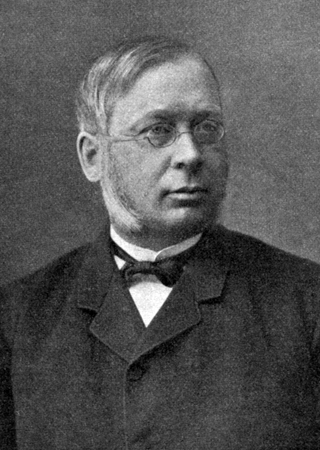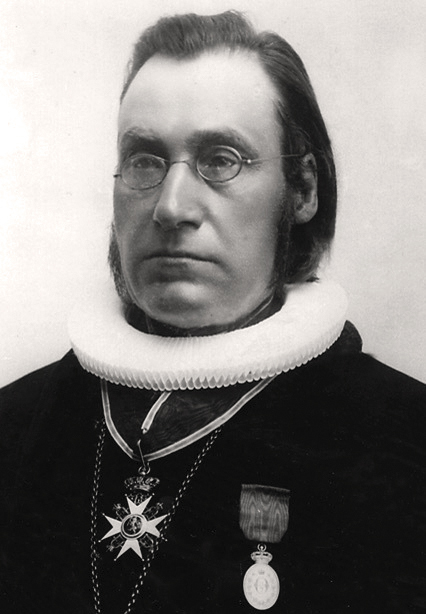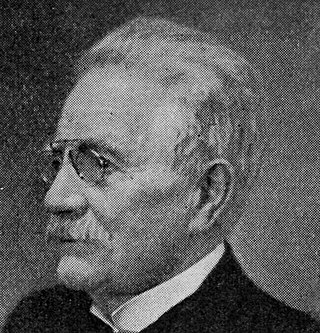
The Stang's Second Cabinet governed Norway between 2 May 1893 and 14 October 1895. It had the following composition:

The Stang's Second Cabinet governed Norway between 2 May 1893 and 14 October 1895. It had the following composition:
| Portfolio | Minister | Period [1] | Party |
|---|---|---|---|
| Prime Minister | Emil Stang | Conservative | |
| Prime Minister in Stockholm | Gregers Winther Wulfsberg Gram | Conservative | |
| Member of the Council of State Division in Stockholm | Ernst Motzfeldt | – July 1894 | Conservative |
| Johannes Winding Harbitz | – July 1894 | Conservative | |
| Christian W. E. B. Olssøn | July 1894 – | Conservative | |
| Francis Hagerup | July 1894 – 9 August 1895 | Conservative | |
| Anton Christian Bang | 27 April 1895 – | Conservative | |
| Ole Andreas Furu | 9 August 1895 – | Conservative | |
| Minister of Defence | Christian W. E. B. Olssøn | – July 1894 | Conservative |
| Johannes Winding Harbitz | July 1894 – 27 April 1895 | Conservative | |
| Christian W. E. B. Olssøn | 27 April 1895 – | Conservative | |
| Minister of Finance and Customs | Ole Andreas Furu | – 9 August 1895 | Conservative |
| Francis Hagerup | 9 August 1895 – | Conservative | |
| Minister of Auditing | Emil Stang | – 7 September 1894 | Conservative |
| Ole Andreas Furu | 7 September 1894 – 27 April 1895 | Conservative | |
| Johannes Winding Harbitz | 27 April 1895 – | Conservative | |
| Minister of the Interior | Johan Henrik Paasche Thorne | – 3 March 1894 | Conservative |
| Peter Birch-Reichenwald | 3 March 1894 – | Conservative | |
| Minister of Labour | Peder Nilsen | Conservative | |
| Minister of Justice and the Police | Francis Hagerup | – July 1894 | Conservative |
| Ernst Motzfeldt | July 1894 – | Conservative | |
| Minister of Church and Education | Anton Christian Bang | – 27 April 1895 | Conservative |
| Emil Stang | 27 April 1895 – | Conservative |
Not to be confused with the modern title State Secretary. The old title State Secretary, used between 1814 and 1925, is now known as Secretary to the Government (Regjeringsråd). [2]

George Francis Hagerup was a Norwegian law professor, diplomat, politician for the Conservative Party and women's rights advocate. He was the 7th prime minister of Norway from 1895 to 1898 and from 1903 to 1905, and leader of the Conservative Party from 1899 to 1902. As a legal scholar, he is known for his contributions to the development of public international law, and was chairman of the Institut de Droit International. He was his party's most active supporter of women's suffrage, and was a co-founder, board member and honorary member of the Norwegian Association for Women's Rights.

Emil Stang was a Norwegian jurist and politician. He served as the 5th prime minister of Norway from 1889–1891 and again from 1893–1895. He also served as the first leader of the Conservative Party from 1884–1889, 1891–1893 and 1896–1899.
The Conservative Party or The Right is a liberal-conservative political party in Norway. It is the major party of the Norwegian centre-right, and was the leading party in government as part of the Solberg cabinet from 2013 to 2021. The current party leader is former Prime Minister Erna Solberg. The party is a member of the International Democrat Union and an associate member of the European People's Party.

Christian Homann Schweigaard was a Norwegian politician of the Conservative Party. He served as the 3rd prime minister for two months in 1884, a period after the impeachment of his predecessor Christian August Selmer called Schweigaard's Ministerium. Schweigaard held a number of key positions, including Chairman of the Conservative Party from 1889–1891 and 1893–1896, as well as Parliamentary Leader from 1889–1891 and 1894–1895. He was Emil Stang's indispensable partner, leading the Conservative Party's policy and organizational development in the 1880s and 1890s.

Charles Cecil Cope Jenkinson, 3rd Earl of Liverpool, styled The Honourable Charles Jenkinson between 1786 and 1828, was a British politician.

Ole Andreas Bachke was the Norwegian jurist and Government Minister.

Anton Christian Bang was a Norwegian theologian, historian and politician for the Conservative Party of Norway. Bang was one of the more prominent figures within the Church of Norway in the decades around 1900. He served as a professor of church history at the Royal Frederick University from 1885 onward, as Minister of Education and Church Affairs from 1893 to 1895, and as Bishop of Oslo from 1896 to 1912.

Edvard Hagerup Bull was a Norwegian jurist and assessor of the Supreme Court of Norway. He was a member of the Norwegian Parliament and government official with the Conservative Party of Norway.

Ernst Motzfeldt was a Norwegian member of the Council of State Division in Stockholm 1893-1894 and Minister of Justice from 1894 to 1895 within the Second Cabinet of Prime Minister Emil Stang
Peder Nilsen was a Norwegian politician for the Conservative Party.

Evald Rygh was a Norwegian banker and politician for the Conservative Party. He served as Minister of Finance and Customs and mayor of Kristiania.

Johan Henrich Paasche Thorne was a Norwegian businessperson and politician for the Conservative Party. He served as mayor of Moss as well as five terms in the Norwegian Parliament, and was Minister of the Interior from 1889 to 1890 and 1893 to 1894.
Willoch's First Cabinet was a minority, Conservative Government of Norway. It succeeded Brundtland's First Cabinet, after the Conservative victory in the 1981 Storting election; and sat from 14 October 1981 to 8 June 1983. It was replaced by Willoch's Second Cabinet, a coalition of the Conservative, Centre and Christian Democrat parties to form a majority government. Willoch's First Cabinet was the first Conservative-only cabinet since Stang's Second Cabinet of 1893–95, and there has not been another Conservative-only cabinet since.

Bahr Halvorsen's Second Cabinet governed Norway between 6 March 1923 and 30 May 1923. It ceased to exist after the death of Prime Minister Otto Bahr Halvorsen. It had the following composition:

The Hagerup's Second Cabinet governed Norway between 22 October 1903 and 11 March 1905. It fell as the cabinet ministers collectively resigned on 28 February and 1 March 1905, as part of the build-up for the dissolution of the union between Norway and Sweden in 1905. Christian Michelsen withdrew his application, and could form the cabinet Michelsen. It had the following composition:
In Norway, a state secretary is a partisan political position within the executive branch of government. Contrary to the position secretary of state in many other countries, a Norwegian state secretary does not head his or her ministry, rather, they are second in rank to a minister. Resembling a de facto vice minister, the state secretary, however, cannot attend a Council of State, and does not act as a temporary minister in case of illness or other leave of absence.

The Stang's First Cabinet governed Norway between 13 July 1889 and 6 March 1891. It was led by Emil Stang and is one of two Conservative Party-only cabinets ever in Norway, the other being Willoch's First Cabinet from 1981 to 1983. It had the following composition:

The Michelsen's Cabinet was a Norwegian cabinet, formed by a coalition of the Liberal Party, the Conservative Party, the Moderate Liberal Party and the Coalition Party. It governed Norway between 11 March 1905 and 23 October 1907. It entered office as part of the build-up for the dissolution of the union between Norway and Sweden in 1905. It had the following composition:

Gregers Winther Wulfsberg Gram was a Norwegian jurist and politician, and international arbitrator. He was a Supreme Court Assessor, Norwegian prime minister in Stockholm from 1889 to 1891 and from 1893 to 1898 and County Governor from 1898 to 1915.

Karl Uchermann was a Norwegian painter and illustrator. He is best known for his portraits of animals, in particular dogs. He also painted altarpieces, and is credited for designing the world's first franking machine in 1901.